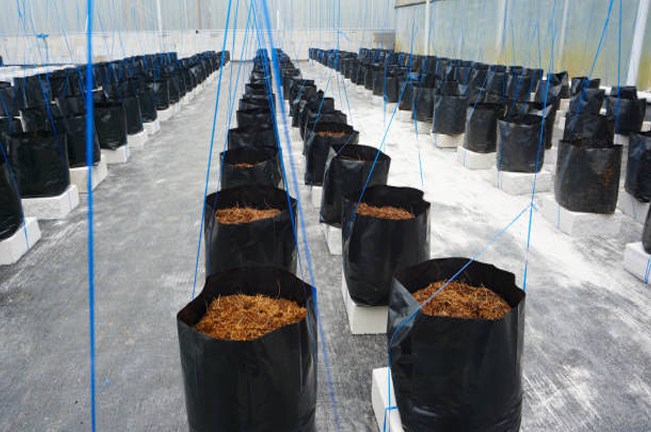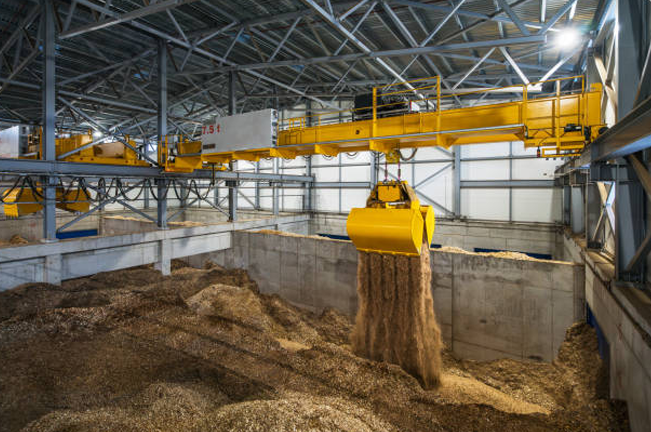Biomaterials and Composites: Innovations in Forestry Products
- September 5, 2024
- 0 comment
In today’s rapidly evolving world, the demand for sustainable materials is at an all-time high. Industries across the globe are seeking alternatives to traditional materials, driven by the need to reduce environmental impact and meet the growing expectations of eco-conscious consumers. Forestry, a sector deeply rooted in the sustainable use of natural resources, plays a pivotal role in this transition. By providing renewable resources, forestry is at the forefront of producing biomaterials and composites that are not only sustainable but also versatile and innovative.

Biomaterials and composites derived from forest resources have emerged as key players in various industries, offering a wide range of applications. From construction to consumer goods, these materials are making significant strides, thanks to their unique properties and the increasing focus on sustainability. As the world continues to shift towards greener practices, the significance of biomaterials and composites in modern applications is becoming increasingly apparent.
Table of Content
- Understanding Biomaterials in Forestry
- Innovations in Wood-Based Composites
- Applications of Biomaterials and Composites in Industry
- Environmental and Economic Impacts
- Challenges in Developing Biomaterials and Composites
- Future Prospects and Innovations in Biomaterials and Composites
- FAQs
Understanding Biomaterials in Forestry

Definition and Types of Biomaterials
Biomaterials, as the name suggests, are materials derived from biological sources. In the context of forestry, these include materials such as cellulose, lignin, and hemicellulose, which are extracted from trees and other plant-based resources. Cellulose, the most abundant organic polymer on Earth, is a key component in many biomaterials. Lignin, another major component of wood, provides rigidity and resistance to decay, while hemicellulose acts as a binding agent within the cell walls of plants.
These biomaterials are harvested and processed through various methods, including mechanical, chemical, and enzymatic treatments. The extraction and processing of these materials have been refined over the years, making them more accessible and applicable in a wide range of industries.
Key Properties and Benefits
One of the most appealing aspects of biomaterials is their unique set of characteristics. These materials are biodegradable, which means they can break down naturally over time, reducing environmental pollution. They also offer strength and versatility, making them suitable for various applications, from packaging to construction.
In addition to their physical properties, biomaterials offer significant environmental benefits. By using materials derived from forests, industries can reduce their reliance on fossil-based resources, thereby lowering their carbon footprint. Moreover, forests play a crucial role in carbon sequestration, capturing and storing carbon dioxide from the atmosphere. The use of biomaterials, therefore, contributes to the fight against climate change by promoting sustainable forest management and reducing greenhouse gas emissions.
Innovations in Wood-Based Composites
Advancements in Composite Technologies
Wood-based composites have come a long way, thanks to advancements in technology and material science. These composites are created by combining wood fibers or particles with adhesives to form materials that are stronger and more durable than their natural counterparts. Cross-laminated timber (CLT) and engineered wood products are prime examples of how technology is revolutionizing the use of wood in construction.
CLT, for instance, is a highly versatile material that can be used in various building applications, from walls to floors and roofs. Its strength and stability make it an ideal alternative to traditional construction materials like steel and concrete. Similarly, engineered wood products, such as laminated veneer lumber (LVL) and glulam, are gaining popularity for their ability to provide structural support while being more environmentally friendly.
Applications Across Industries
The innovations in wood-based composites are not limited to the construction industry. These materials are also making their way into the automotive and consumer goods sectors. In the automotive industry, wood-based composites are being used to develop lightweight and durable components that improve fuel efficiency and reduce vehicle emissions. In consumer goods, these materials are replacing conventional plastics, offering a more sustainable option for everyday products.
Case studies from around the world showcase the successful implementation of innovative composites. For example, the use of CLT in high-rise buildings has demonstrated that wood can be a viable alternative to steel and concrete, offering both environmental and economic benefits. In the automotive sector, manufacturers are increasingly incorporating wood-based composites into their designs, driven by the need for more sustainable and efficient materials.
Applications of Biomaterials and Composites in Industry
Automotive Sector
The automotive industry has long been searching for materials that are both lightweight and strong, and biomaterials derived from forests are proving to be a valuable solution. Components made from cellulose fibers and other forest-based materials are not only reducing the weight of vehicles, thereby improving fuel efficiency, but also contributing to lower emissions. These materials are being used in various parts of vehicles, from interior panels to structural components, offering a sustainable alternative to traditional materials.
Packaging and Consumer Goods
In the packaging industry, the shift from plastic to biodegradable composites is gaining momentum. Biomaterials, such as those derived from cellulose, are being used to create packaging solutions that are both functional and environmentally friendly. These materials offer the same level of protection as conventional plastics but have the added benefit of being biodegradable, reducing waste and environmental impact.
Construction and Infrastructure
The construction sector is perhaps the most significant beneficiary of innovations in biomaterials and composites. Engineered wood products are being increasingly adopted in building projects, offering a sustainable alternative to traditional construction materials. These materials not only reduce the carbon footprint of buildings but also enhance their overall performance. Buildings made with engineered wood products are known for their energy efficiency, durability, and aesthetic appeal, making them a popular choice for architects and builders alike.
Environmental and Economic Impacts
Sustainability and Conservation
The use of biomaterials and composites is closely linked to forest conservation and sustainable forestry practices. By promoting the use of renewable resources, industries are helping to ensure that forests continue to provide essential ecosystem services, such as carbon sequestration and biodiversity preservation. The adoption of these materials is also supporting climate change mitigation efforts by reducing greenhouse gas emissions and promoting sustainable land use practices.
Economic Opportunities
The innovations in forestry products are not only benefiting the environment but also creating new economic opportunities. Emerging markets for biomaterials and composites are driving economic growth in rural communities and forest-dependent economies. These materials are opening up new avenues for product development and market expansion, offering economic benefits that extend beyond the forestry sector.
Lifecycle and End-of-Use Considerations
One of the key aspects of biomaterials and composites is their lifecycle and end-of-use considerations. Unlike traditional materials, these products are designed with sustainability in mind, from production to disposal. Strategies for recycling, reusing, and composting are integral to their lifecycle, ensuring that their environmental impact is minimized. By focusing on the entire lifecycle of these materials, industries can enhance their environmental benefits and contribute to a more circular economy.
Challenges in Developing Biomaterials and Composites
Technical and Manufacturing Challenges
Despite the many advantages of biomaterials and composites, there are challenges that need to be addressed. Scaling up production and ensuring consistency in quality are major hurdles that manufacturers face. The technical barriers in material processing and product development can also pose challenges, particularly when it comes to meeting the performance standards required for different applications.
Supply Chain and Market Adoption
Another challenge is sourcing sustainable raw materials and ensuring a stable supply chain. The market adoption of biomaterials and composites can be slow, particularly in industries that are heavily reliant on traditional materials. Education and awareness among consumers and industries are crucial for overcoming market resistance and promoting the use of sustainable materials.
Regulatory and Policy Barriers
Regulatory challenges can also hinder the development and adoption of biomaterials and composites. Supportive policies are needed to encourage innovation and ensure that these materials can compete with traditional products. Examples of successful policies include incentives for using sustainable materials and regulations that promote the use of renewable resources in product development.
Future Prospects and Innovations in Biomaterials and Composites
Emerging Trends and Technologies
The future of biomaterials and composites in forestry products is bright, with emerging trends and technologies paving the way for new innovations. Advances in nanotechnology, biochemistry, and digital tools are shaping the next generation of materials, offering even greater potential for sustainable product development. Predictions for the future include increased use of biomaterials in high-tech industries and the continued evolution of wood-based composites for a wide range of applications.
Global Collaboration and Research
International cooperation is essential for advancing research and development in biomaterials and composites. Governments, research institutions, and private sectors are working together to explore new possibilities and bring innovative products to market. Case studies of successful collaborations highlight the importance of global partnerships in driving innovation and sustainability in forestry products.
Potential Impact on Global Sustainability Goals
The innovations in biomaterials and composites have the potential to make a significant impact on global sustainability goals. By contributing to the reduction of greenhouse gas emissions, promoting sustainable land use, and supporting economic development, these materials are playing a key role in the transition to a more sustainable and resilient global economy. As research continues to unlock new possibilities, the future of forestry products looks promising, with biomaterials and composites leading the way.
Frequently Asked Questions (FAQs)
1. What are biomaterials in the context of forestry?
Biomaterials in forestry are materials derived from renewable forest resources, such as cellulose, lignin, and hemicellulose. These materials are used in various industries for their sustainable and eco-friendly properties.
2. How are biomaterials harvested and processed from forests?
Biomaterials are extracted from forest resources through methods like mechanical, chemical, and enzymatic treatments. These processes refine the raw materials into usable forms for various applications, including packaging, construction, and consumer goods.
3. What are the key benefits of using biomaterials over traditional materials?
Biomaterials offer several benefits, including biodegradability, reduced environmental impact, and the ability to sequester carbon. They provide a sustainable alternative to fossil-based materials and help reduce the carbon footprint of various industries.
4. What are wood-based composites, and how are they used?
Wood-based composites are materials made by combining wood fibers or particles with adhesives. These composites, such as cross-laminated timber (CLT) and laminated veneer lumber (LVL), are used in construction, automotive, and consumer goods industries due to their strength, durability, and sustainability.
5. How do innovations in biomaterials and composites contribute to sustainability?
Innovations in biomaterials and composites contribute to sustainability by reducing reliance on non-renewable resources, lowering greenhouse gas emissions, and promoting forest conservation. These materials support the circular economy and enhance the environmental performance of various products.
6. What are some examples of biomaterials and composites used in the automotive industry?
In the automotive industry, biomaterials like cellulose fibers are used to create lightweight, durable components that improve fuel efficiency and reduce emissions. These materials are increasingly being adopted in vehicle interiors, structural parts, and other applications.
7. How are biomaterials being used to replace plastics in packaging?
Biomaterials, such as biodegradable composites derived from cellulose, are replacing traditional plastics in packaging. These materials offer the same protective qualities as plastic but are more environmentally friendly, reducing waste and the environmental impact of packaging.
8. What are the environmental benefits of using engineered wood products in construction?
Engineered wood products, like CLT and LVL, offer environmental benefits by reducing the carbon footprint of buildings. These materials are sourced from renewable forests and contribute to energy-efficient, durable construction, supporting sustainable building practices.
9. What challenges exist in developing and scaling biomaterials and composites?
Challenges include technical and manufacturing hurdles, such as ensuring consistency in quality and scaling production. Supply chain issues, market adoption, and regulatory barriers also pose significant challenges to the widespread use of these materials.
10. How are regulatory policies influencing the development of biomaterials and composites?
Regulatory policies play a crucial role in promoting or hindering the development of biomaterials and composites. Supportive policies, such as incentives for sustainable materials and regulations favoring renewable resources, can drive innovation and adoption in various industries.
11. What future trends are expected in the field of biomaterials and composites?
Future trends include advancements in nanotechnology, biochemistry, and digital tools that will enhance the performance and applications of biomaterials and composites. Increased global collaboration and research are expected to drive further innovation and contribute to achieving global sustainability goals.
12. How do biomaterials and composites impact global sustainability goals?
By reducing greenhouse gas emissions, promoting sustainable land use, and supporting economic development, biomaterials and composites play a key role in advancing global sustainability goals. Their use in various industries helps address environmental challenges and supports a transition to a low-carbon economy.
13. What are some successful case studies of biomaterials and composites in industry?
Successful case studies include the use of CLT in high-rise buildings, which demonstrates the material’s viability as an alternative to steel and concrete, and the incorporation of wood-based composites in automotive manufacturing, which highlights the potential for sustainable materials in reducing vehicle emissions.
14. How do biomaterials and composites contribute to the economic development of rural communities?
The production and use of biomaterials and composites create economic opportunities in rural areas by driving demand for sustainable forestry products, supporting jobs in the forestry and manufacturing sectors, and fostering local economic growth through innovation in product development.
15. What lifecycle considerations are important when using biomaterials and composites?
Important lifecycle considerations include the sustainability of raw material sourcing, the environmental impact of production processes, and the end-of-use strategies for recycling, reusing, or composting these materials. A focus on the full lifecycle helps maximize the environmental benefits of biomaterials and composites.

Gilbert Griffin
Forestry AuthorGilbert Griffin is a forest management expert specializing in sustainable practices, forest health, conservation, and land management. With extensive knowledge in pest control, disease management, and habitat restoration, Gilbert develops strategies to preserve forest ecosystems and biodiversity. Passionate about the natural world, Gilbert adapts to changes in forest management and stays updated through continuous learning. Gilbert also provides seasonal advice to optimize forest care throughout the year.













Leave your comment